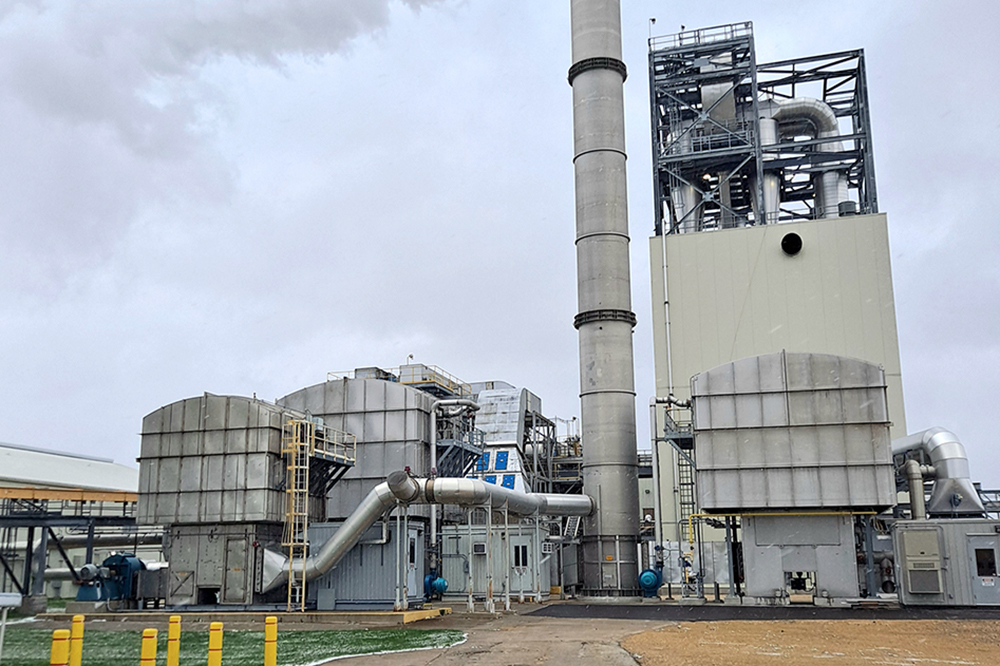
Jared Strong, Iowa Capital Dispatch
A company that wants to help ethanol producers harness their carbon dioxide emissions to produce an additional renewable fuel says its technology is a viable alternative to proposed carbon dioxide pipelines.
CapCO2 Solutions is nearing completion of its first “green methanol” project at an ethanol plant in Illinois. The company hopes that a successful launch there this summer will lead ethanol producers in Iowa to follow suit.
“We think it’s a far more attractive solution for most ethanol plants than trying to ship (carbon dioxide) somewhere,” said Jeff Bonar, the company’s chief executive.
The carbon dioxide emissions of ethanol plants are relatively pure, which makes them economically attractive candidates for carbon capture. A handful of Iowa’s 42 ethanol refineries already capture their emissions and sell the gas for other commercial purposes.
Meantime, the federal government has created substantial tax incentives for capturing and sequestering carbon dioxide and for producing low-carbon fuels.
CapCO2 estimates that its “methanol modules” — pre-built shipping containers with the equipment to convert carbon dioxide into methanol — have the potential to reduce the carbon scores of the facilities’ ethanol by a similar amount as currently proposed carbon pipelines.
But rather than piping the greenhouse gas out of state for underground sequestration, it would be used to create a new product the facilities could sell.
Methanol is used to produce a variety of products — ranging from plastic to paint to insulation to cosmetics — and it also a potential source of renewable fuel. Because the fuel can have little or no sulfur, some shipping companies in recent years have considered using it to power their ocean vessels.
CapCO2’s modules cost about $12 million apiece, Bonar said, and are created with technology licensed from a European company. Ethanol plants would use multiple modules depending on the amount of carbon dioxide available for conversion to methanol.
Bonar said it’s a less expensive alternative to traditional methanol production systems and with a much smaller footprint. He said ethanol producers might be able to recoup their up-front costs within a year.
“It’s a very cost-effective approach,” he said.
A new technology
Whether green methanol — produced by CapCO2’s process or another company’s — is a viable alternative to the proposed pipeline systems is unclear. Some pipeline opponents have argued that methanol is a better option that allays their concerns about pipeline safety, damage to land for construction and the use of eminent domain to build them.
The leaders of several ethanol production facilities in Iowa who have considered methanol production did not respond to requests to comment for this article.
“People are interested in learning about it, but they don’t see it as a near-term solution,” said Monte Shaw, executive director of the Iowa Renewable Fuels Association, which advocates for the ethanol industry. “This is a new technology. You can’t really go anywhere in the world and see one of these plants operating.”
Shaw doesn’t rule out green methanol as a future product that might be produced from carbon dioxide captured at ethanol plants, but he said pipeline systems similar to what has been proposed by Summit Carbon Solutions offer a more immediate and proven way for those facilities to produce low-carbon fuels.
Summit is nearing the end of its hazardous liquid pipeline permit process in Iowa. It wants to build a five-state system that would connect to at least 25 of Iowa’s ethanol facilities to transport carbon dioxide to North Dakota for underground storage, at a cost of more than $5 billion.
Those ethanol producers would benefit from selling their fuels into low-carbon markets and would be eligible for generous federal tax credits, which in future years could expire. Summit has agreements with the plants to share the profits.
The company has said the system could be operational in 2026, barring further regulatory setbacks. North and South Dakota both rejected Summit’s initial proposals. North Dakota is reconsidering, and the company has said it will reapply in South Dakota.
Bonar said it takes between one and two years for CapCO2 to install its systems. To qualify as green methanol, the ethanol producers would also need to power the equipment from a source that does not generate carbon dioxide emissions, such as wind turbines or solar panels.
Much of the electricity is used to make hydrogen — the other key ingredient to methanol besides carbon dioxide.
“Green methanol is so valuable that it can quickly pay for additional zero-carbon power construction,” said Bonar, who estimated that the cost to install wind turbines near an ethanol plant might account for 10 or 15% of the total project cost.
The Illinois plant that is the site of CapCO2’s first project is using electricity generated by a nuclear power plant, of which Iowa has none.
